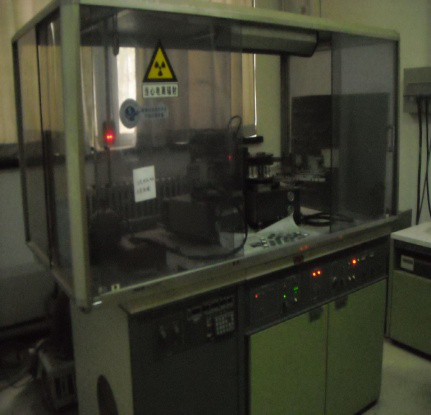产品:X-ray diffraction analysis
Detailed
Detailed consultation with customer service
Phase analysis
XRD is the abbreviation of X-ray diffraction, X-ray diffraction, through the X-ray diffraction of materials, analysis of its diffraction pattern, to obtain the composition of materials, the structure or morphology of atoms or molecules inside materials and other information research means.
Phase analysis is the most widely used aspect of X-ray diffraction in metals, including qualitative analysis and quantitative analysis. The former compares the lattice plane spacing and diffraction intensity of the material with the diffraction data of the standard phase to determine the phase in the material; the latter determines the content of each phase in the material according to the intensity of the diffraction pattern. It has been widely used in the study of the relationship between the properties and the content of each phase, the inspection of the composition ratio of materials and the subsequent treatment procedures.
Japanese Physical X-ray diffractometer
External services:
Qualitative and quantitative phase analysis, analysis software includes retrieval and k-value quantitative analysis, diffraction spectrum analysis, lattice parameter optimization calculation, diffraction index, quantitative analysis of retained austenite.
X-ray diffraction test sample requirements
1. If the metal sample is in block, plate or cylinder shape, the tested surface shall be ground into a plane with an area of not less than 10 x 5 mm2. If the area is too small, several pieces can be pasted together.
2. For the strip sample, it is required to glue it on the glass sheet (the glass sheet is borrowed in our laboratory). Note: do not expose the surface.
3. The powder sample is required to be ground to 320 mesh size, about 40 μ M. The diffraction intensity of coarse particle size is the bottom, the peak shape is not good, and the resolution is low. To understand the physical and chemical properties of the sample, such as whether it is flammable, easy to deliquescence, easy to corrosion, toxic, volatile. Note: if the powder sample reacts with acetone, alcohol and water, the laboratory teacher should be informed.
4. The powder sample should be about 1-2g. If it is too small, it is also required to lay 5 × 5 mm2.
5. Block samples shall be marked on the back, preferably on the back.
| Warm tip: the products supplied by Beijing Beike Xincai Technology Co., Ltd. are only used for scientific research, not for human body |
| Item ID | Info |
| BK2020011704-01 | CAS: ID:BK2020011704 Pack: Parameter:物相分析 Stock:100 Make up: Price:$0 |
| BK2020011704-02 | CAS: ID:BK2020011704 Pack: Parameter:点阵常数测定 Stock:100 Make up: Price:$0 |
| BK2020011704-03 | CAS: ID:BK2020011704 Pack: Parameter:应力测定 Stock:100 Make up: Price:$0 |
| BK2020011704-04 | CAS: ID:BK2020011704 Pack: Parameter:晶粒尺寸测定 Stock:100 Make up: Price:$0 |
| BK2020011704-05 | CAS: ID:BK2020011704 Pack: Parameter:取向分析 Stock:100 Make up: Price:$0 |
| BK2020011704-06 | CAS: ID:BK2020011704 Pack: Parameter:显微结晶学分析 Stock:100 Make up: Price:$0 |
| BK2020011704-07 | CAS: ID:BK2020011704 Pack: Parameter:X射线衍射 Stock:100 Make up: Price:$0 |
- Previous: Transmission electron
- Next: ITOConductive glass su


 Material testing and consumables
Material testing and consumables
